Best laptops for Ansys | Ansys, the engineering simulation software behemoth, demands serious computational muscle. Wrangling complex fluid dynamics, stress analyses, and electromagnetic fields is no mean feat, and choosing the right laptop to handle these calculations can make or break your workflow. Fear not, intrepid engineers and analysts! This guide delves into the best laptops for running Ansys, empowering you to choose the perfect machine to tackle your toughest simulations.
From workstations that pack a punch to surprisingly adept gaming laptops, we’ll unveil the top contenders, considering crucial factors like processing power, graphics prowess, RAM capacity, and thermal management. So, buckle up and get ready to unlock the full potential of Ansys on your trusty laptop companion!

Ansys laptop requirements
- Operating System: 64-bit Windows 10 or 11 (specific versions may be required for certain Ansys products)
- Processor: Workstation-class Intel or AMD CPU (i7 or comparable recommended)
- RAM: 8GB minimum, 16GB or more recommended (depending on project size)
- Hard Drive: 25GB minimum, SSD preferred for speed
- Graphics Card: Dedicated graphics card with latest drivers and at least 1GB video RAM, supporting OpenGL 4.5 and DirectX 11 (professional workstation class recommended for larger models)
- DirectX: DirectX 11 or higher
The best laptops for Ansys simulations
- HP Envy 16″ WQXGA Touch-Screen Laptop Computer ($1,339)
- Dell XPS 17 9720 Laptop ($3,799)
- MSI Vector GP77 Laptop ($1,999)
- Acer Nitro 5 AN515-58-57Y8 Gaming Laptop ( $774)
- Lenovo Slim 7 Touch Laptop ($1,379)
- ASUS VivoBook Pro 16 Laptop ($972)
1. HP Envy 16 (Best laptop for Ansys Mechanical)
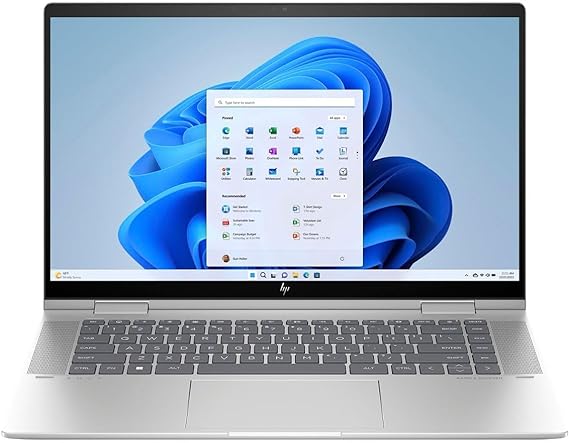
| Screen Size | 16 Inches |
| Hard Disk Size | 1 TB SSD |
| CPU Model | Intel Core i9 |
| Ram Memory Installed Size | 16 GB |
| Operating System | Windows 11 |
| Graphics Card Description | Dedicated |
| Graphics Coprocessor | NVIDIA GeForce RTX 4060 |
| CPU Speed | 5.4 GHz |
The HP Envy with its impressive features makes it a strong contender for the title of “Best laptop for Ansys.” Here’s why:
Properties of HP Envy
- High-Resolution Display: The 16-inch IPS touch screen with a resolution of 2560 × 1600 pixels and a 16:10 aspect ratio ensures a clear and detailed view of complex simulations and models in Ansys. The touch screen functionality can also enhance interaction and navigation within the software.
- Eye Protection: The display’s ability to protect your eyes from harmful blue light is crucial for professionals who spend extended periods working on simulations and analyses. This feature helps reduce eyestrain, promoting a more comfortable and sustainable working environment.
- Powerful Graphics Performance: The NVIDIA GeForce RTX 4060 graphics card is a robust choice for handling the demanding graphics requirements of Ansys. Its capabilities are not only beneficial for gaming but also for accelerating simulations, rendering, and other graphics-intensive tasks inherent to Ansys.
- High-Performance Processor: The 13th Gen Intel Core i9-13900H processor offers exceptional performance and efficiency for multi-tasking, a crucial aspect when dealing with complex simulations in Ansys. The processor’s advancements in real-world computing contribute to smoother and faster simulations.
- Exceptional Audio Quality: The HP Quad Speakers, HP Audio Boost, and Bang & Olufsen tuning provide an exceptionally rich audio experience. While audio may not be the primary consideration for Ansys users, a high-quality audio system can enhance the overall computing experience, making it more enjoyable for various tasks.
- Connectivity Options: The Thunderbolt 4 with USB Type-C ensures versatile connectivity, allowing you to power your device and connect multiple high-resolution displays with a single cable. This is advantageous for professionals who require a multi-monitor setup for improved productivity.
In summary, the HP Envy with its combination of a high-resolution display, powerful graphics, top-tier processor, exceptional audio, and versatile connectivity makes it a well-rounded choice for Ansys users who demand both performance and comfort in their computing experience.
2. Dell XPS 17 9720 (Best laptop for Ansys and Solidworks)
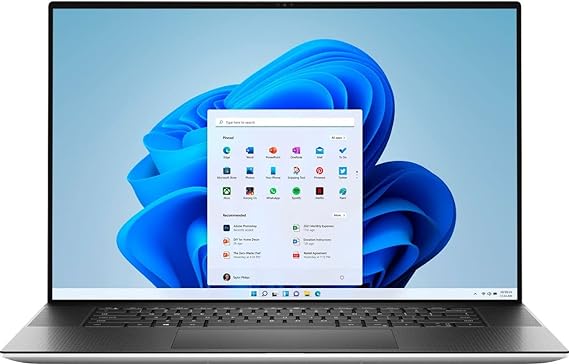
| Model Name | XPS 17 9720 |
| Screen Size | 17 Inches |
| Color | Platinum Silver |
| Hard Disk Size | 4 TB |
| CPU Model | Core i7 Family |
| Ram Memory Installed Size | 64 GB |
| Operating System | Windows 11 Pro |
| Graphics Card Description | NVIDIA RTX 3060 Dedicated |
The Dell XPS 17 9720, with its powerful specifications, is an excellent choice for running Ansys simulations. Here are several reasons why it stands out as one of the best laptops for Ansys:
Properties of XPS 17 9720
- Processing Power: The laptop features the 12th Gen Intel Core i7-12700H processor with 14 cores and 20 threads. This powerhouse CPU is capable of handling complex simulations and computations that Ansys requires, providing excellent multi-core performance.
- Memory Capacity and Speed: With a massive 64GB of 4800 MHz DDR5 SDRAM, the laptop ensures ample memory for large-scale simulations. The high memory speed contributes to faster data access and manipulation, crucial for running Ansys simulations efficiently.
- Storage Capacity and Speed: The 4TB NVMe m.2 Solid State Drive not only offers an enormous amount of storage for simulation data but also delivers high-speed data transfer rates. This ensures quick loading times for Ansys simulations and efficient handling of large datasets.
- Graphics Performance: The NVIDIA GeForce RTX 3060 with 6GB GDDR6 VRAM is a capable GPU that supports ray tracing. While Ansys primarily relies on CPU performance, having a powerful GPU can benefit certain simulations and visualization tasks.
- High-Resolution Touchscreen Display: The 17″ UHD+ touchscreen display with a resolution of 3840 x 2400 provides a detailed and immersive visual experience. This can be advantageous when working with complex simulations that involve intricate graphical representations and visualizations.
- Connectivity Options: The laptop comes with Thunderbolt 4 ports, providing high-speed data transfer capabilities. This is useful for connecting external devices, such as high-performance storage or additional monitors, enhancing the overall Ansys workflow.
- Wireless Connectivity: The Intel Killer Wi-Fi 6 card ensures fast and reliable wireless connectivity, which can be beneficial for accessing cloud-based resources or collaborating with colleagues.
- Portability and Build Quality: Despite its powerful internals, the laptop maintains a relatively slim and lightweight profile, making it portable for on-the-go simulations. The CNC machined aluminum build with a carbon fiber or woven glass fiber composite palm rest ensures durability.
- Backlit Keyboard and Fingerprint Reader: The full-size island-style backlit keyboard makes it convenient to work in various environments, and the fingerprint reader adds an extra layer of security.
- Long Battery Life: The 6-cell 86 WHr battery provides decent battery life, allowing users to work on simulations without being tethered to a power source for extended periods.
In summary, the Dell XPS 17 9720 offers a well-rounded package of powerful hardware, high-speed storage and memory, a high-resolution display, and robust connectivity options, making it an excellent choice for professionals working with Ansys simulations.
3. MSI Vector GP77 (Best MSI laptop for Ansys)
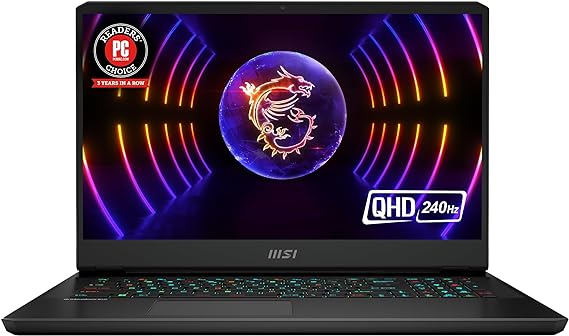
| Model Name | Vector GP77 13VG-096US |
| Screen Size | 17.3 Inches |
| Color | Cosmo Gray |
| Hard Disk Size | 1 TB |
| CPU Model | Core i9 |
| Ram Memory Installed Size | 32 GB |
| Operating System | Windows 11 Pro |
| Graphics Card Description | Dedicated |
| Graphics Coprocessor | NVIDIA GeForce RTX 4070 |
The MSI Vector GP77 appears to be a strong contender for users looking for a laptop to run Ansys simulations effectively. Here’s a breakdown of its features and how they align with the requirements for Ansys:
Properties of Vector GP77
- 13th Gen. Intel Core i9 Processor: The powerful Intel Core i9 processor provides the necessary computing power for handling complex simulations in Ansys. Its multi-core architecture ensures efficient parallel processing, which is crucial for simulation software like Ansys.
- Windows 11 Pro: The operating system is a key component for running professional software applications smoothly. Windows 11 Pro, with its enhanced performance and security features, provides a stable environment for Ansys simulations and other high-demanding tasks.
- NVIDIA GeForce RTX 4070 GPU: Ansys benefits significantly from a powerful GPU, and the NVIDIA GeForce RTX 4070 with Ada architecture is well-equipped for this purpose. The GPU’s ray tracing capabilities can enhance the visualization of simulation results, providing a more realistic and detailed representation of complex models.
- QHD Display with 240Hz Refresh Rate: The 17″ QHD display with a fast 240Hz refresh rate ensures a smooth and immersive visual experience. This is particularly beneficial for users working with complex simulations, as a high refresh rate contributes to a more responsive and fluid interaction with the software.
- Vapor Chamber Design: The dedicated vapor chamber cooler on both the CPU and GPU is crucial for maintaining optimal performance during prolonged simulation runs. Ansys simulations can generate significant heat, and a well-designed cooling system helps prevent thermal throttling, ensuring stable and consistent performance over extended periods.
In summary, the MSI Vector GP77 offers a combination of powerful hardware, a high-quality display, and an efficient cooling system, making it a suitable choice for professionals and enthusiasts working with Ansys simulations. The laptop’s specifications align well with the demanding requirements of Ansys software, providing a reliable platform for simulations and other compute-intensive tasks.
4. Acer Nitro 5 (Best laptop for Ansys gaming)
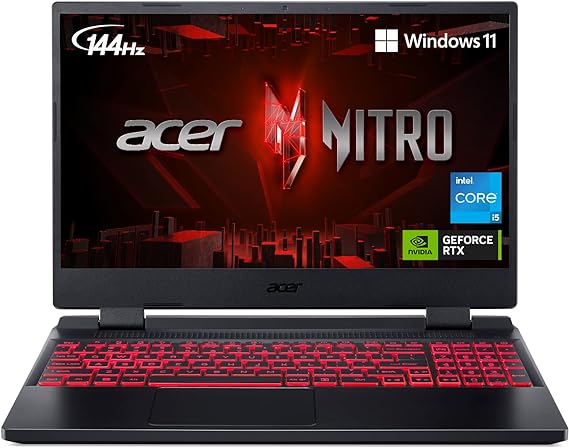
| Model Name | AN515-58-57Y8 |
| Screen Size | 15.6 Inches |
| Color | Black |
| Hard Disk Size | 512 GB |
| CPU Model | Core i5 |
| Ram Memory Installed Size | 16 GB |
| Operating System | Windows 11 Home |
| Special Feature | Backlit Keyboard |
| Graphics Card Description | NVIDIA GeForce RTX 3050 Ti 4GB Dedicated |
The Acer Nitro 5 with its impressive specifications is indeed a commendable choice for running Ansys, a powerful engineering simulation software. Here’s why it stands out:
Properties of Nitro 5
- 12th Gen Intel Core i5 Processor: The 12th Gen Intel Core i5 processor provides substantial processing power needed for running complex simulations in Ansys. Its performance ensures smooth operation and efficient handling of computational tasks.
- NVIDIA GeForce RTX 3050 Ti Graphics: Ansys often utilizes GPU acceleration for certain computations, and the NVIDIA GeForce RTX 3050 Ti with dedicated GDDR6 VRAM and RTX features provides the necessary graphics power. The Ray Tracing Cores and Tensor Cores enhance visualization and accelerate simulations, contributing to faster analysis and rendering.
- 16GB DDR4 Memory: Ansys simulations can be memory-intensive, and the 16GB DDR4 3200MHz memory ensures ample memory for handling large datasets and complex simulations efficiently.
- 512GB PCIe Gen 4 SSD: The PCIe Gen 4 SSD offers fast data access and storage, crucial for loading and saving large simulation files quickly, thereby improving productivity.
- Killer Connectivity: The Killer Ethernet E2600 and Killer Wi-Fi 6 AX1650 prioritize network traffic, ensuring a stable and lag-free connection, which is essential for cloud-based simulations and collaboration.
- Cooling System: The dual-fan cooling system and quad-exhaust port design help dissipate heat effectively during prolonged simulation sessions, maintaining optimal performance and preventing thermal throttling.
- Ports and Expandability: The variety of ports including USB Type-C, USB 3.2 Gen 2, HDMI 2.1, and Ethernet allow for easy connectivity with external devices and peripherals, facilitating data transfer and multi-monitor setups for enhanced productivity.
- Portability: Despite its powerful hardware, the Acer Nitro 5 remains relatively portable, making it suitable for users who need to carry out simulations on the go.
In conclusion, the Acer Nitro 5 offers a well-rounded combination of processing power, graphics capability, memory, storage, connectivity, and portability, making it a suitable choice for engineers and professionals working with Ansys simulations.
5. Lenovo Slim 7 (Best Lenovo laptop for Ansys)
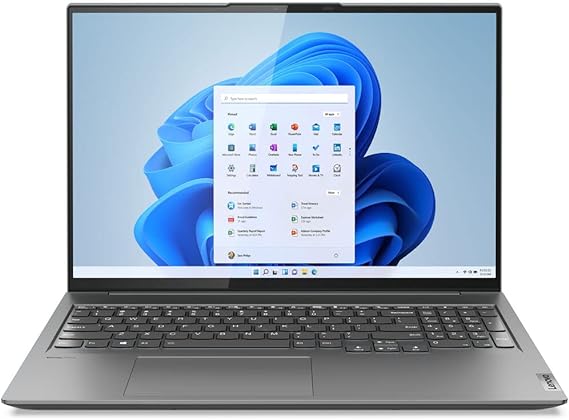
| Model Name | Slim 7 82VB |
| Screen Size | 16 Inches |
| Color | Storm Grey |
| Hard Disk Size | 1 TB |
| CPU Model | Core i7 Family |
| Ram Memory Installed Size | 32 GB |
| Operating System | Windows 11 Pro |
| Special Feature | HD Audio, Backlit Keyboard, Memory Card Slot, Numeric Keypad |
| Graphics Card Description | Intel Arc A370M 4GB Dedicated |
The Lenovo Slim 7, equipped with the specified features, emerges as an excellent choice for running Ansys, a demanding engineering simulation software. Here’s why it stands out as one of the best laptops for Ansys:
Properties of Slim 7
- Powerful Processor: The 12th Generation Intel Core i7-12700H processor, boasting 14 cores and 20 threads, provides substantial computational power. Ansys simulations often require significant processing capabilities, and the i7-12700H’s high clock speeds and core count ensure smooth and efficient performance.
- Ample Memory: With 32GB of DDR5 SDRAM clocked at 4800 MHz, the laptop offers abundant memory for handling complex simulations and large datasets efficiently. Ansys simulations can be memory-intensive, and having ample RAM helps prevent performance bottlenecks.
- High-Resolution Display: The 16″ touchscreen LED-backlit 2.5K display with 500 nits brightness and 100% sRGB coverage ensures crisp visuals and accurate color representation. This is crucial for engineers and analysts who rely on visual feedback during simulation runs and analysis.
- Graphics Performance: The Intel Arc A370M 4GB GDDR6 graphics card enhances graphical processing capabilities, facilitating tasks such as rendering and visualization within Ansys simulations.
- Connectivity Options: The laptop’s array of connectivity options, including Thunderbolt 4, USB 3.2 Gen 1, HDMI 2.0, and Wi-Fi 6 AX201, ensure seamless data transfer and connectivity to external devices and networks, which is essential for collaborative work and accessing cloud-based resources.
- Windows 11 Pro: The inclusion of Windows 11 Pro provides a stable and secure operating system environment, ensuring compatibility with Ansys software and other engineering applications commonly used in the industry.
- Portability and Build Quality: Despite its powerful hardware, the Lenovo Slim 7 maintains a sleek and lightweight design, making it highly portable for professionals who need to work on-the-go. Additionally, the full-size backlit keyboard and long-lasting battery further enhance productivity and usability.
Overall, the combination of robust hardware specifications, high-quality display, versatile connectivity options, and portability makes the Lenovo Slim 7 an excellent choice for engineers and analysts working with Ansys simulations.
6. ASUS VivoBook Pro 16 Laptop
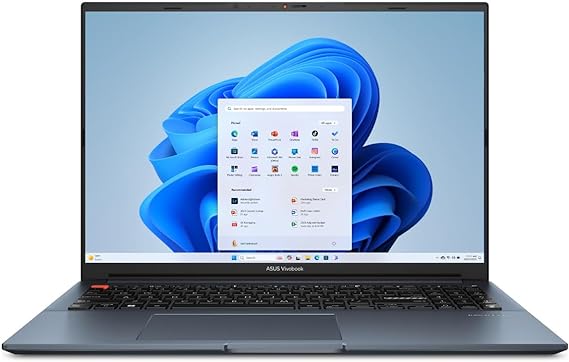
| Model Name | VivoBook Pro 16 |
| Screen Size | 16 Inches |
| Color | Quiet Blue |
| Hard Disk Size | 1 TB |
| CPU Model | Core i9 |
| Ram Memory Installed Size | 16 GB |
| Operating System | Windows 11 Home |
| Special Feature | Fingerprint Reader |
| Graphics Card Description | NVIDIA® GeForce® RTX™ 4060 Dedicated |
The ASUS VivoBook Pro 16 Laptop boasts several features that make it an excellent choice for ANSYS users:
Properties of VivoBook Pro 16
- Powerful Graphics and Processing: With GeForce RTX graphics and NVIDIA Studio Drivers, this laptop ensures smooth rendering and editing experiences, which are essential for running complex simulations and analyses in ANSYS.
- Durability: Meeting the MIL-STD 810G military standard means this laptop is built to withstand tough conditions, ensuring reliability even in demanding work environments where ANSYS simulations may run for extended periods.
- Efficient Cooling System: The ASUS IceCool Plus thermal technology keeps the laptop cool during intense computational tasks, preventing performance throttling and maintaining optimal performance for ANSYS simulations.
- Long Battery Life: The 70WHrs battery allows users to work on ANSYS projects outdoors without worrying about running out of power. Additionally, ASUS Fast Charging Technology ensures quick recharge times, minimizing downtime.
- Generous Screen Size: The 16-inch display provides ample screen real estate for viewing complex simulation results and manipulating models in ANSYS.
- Large Storage Capacity and Fast Speed: The 1TB SSD and up to 16GB RAM ensure fast access to simulation data and smooth operation of ANSYS software.
- Extensive Connectivity Options: Multiple ports, including USB A, USB C, and HDMI, allow for easy connection to peripherals and external displays, enhancing productivity for ANSYS users who may need to connect various devices.
- User-Friendly and Secure: Features such as the fingerprint scanner and laptop camera cover enhance security and privacy, crucial for handling sensitive data often involved in ANSYS simulations.
- Free Creative Software Bundle: The complimentary 3-month Adobe Creative Cloud subscription adds value to the purchase and may be useful for ANSYS users involved in visualizing and presenting simulation results.
Overall, the ASUS VivoBook Pro 16 Laptop offers a combination of power, durability, connectivity, and security features that make it an excellent choice for ANSYS users who require high performance and reliability for their simulations.
Conclusion – Best laptops for Ansys
Choosing the best laptop for Ansys ultimately depends on your specific needs and budget. While powerful processors, ample RAM, and dedicated graphics cards are crucial, factors like portability, battery life, and cooling solution shouldn’t be overlooked. By carefully considering your workflow and priorities, you can find the ideal laptop that seamlessly handles Ansys and empowers you to excel in your engineering endeavors. Remember, investing in the right machine can streamline your work, boost productivity, and ultimately bring your simulations to life. Now, with the knowledge you’ve gained, go forth and conquer the world of computational engineering!
FAQs – Best laptops for Ansys
Crushing complex simulations and conquering intricate analyses with Ansys demands a powerful laptop, but navigating the hardware jungle can be daunting. Fear not, aspiring engineers and seasoned analysts! This FAQ guide will equip you with the knowledge to discern the best laptops for tackling Ansys like a pro, empowering you to choose the perfect machine to unleash your engineering prowess. So, buckle up and dive into the essential questions to answer before embarking on your Ansys laptop quest!
In this section, we will look for answers to the following frequently asked questions about laptops for Ansys.
- What are the requirements for Ansys laptop?
- Which processor is best for Ansys?
- What are the best PC specs for Ansys?
- Is Ansys CPU or GPU intensive?
- What graphics card is best for Ansys?
- How many cores are needed for Ansys?
- Best CPU for Ansys Fluent
1. What are the requirements for Ansys laptop?
Ansys laptop requirements can vary depending on the specific software you’re using and the complexity of your projects. However, there are some general recommendations to ensure smooth performance:
Minimum requirements:
- Operating system: 64-bit Windows 10 (recommended) or later 64-bit versions. Some software may still work on Windows 7 or 8, but official support is phased out.
- Processor: Workstation-class Intel or AMD CPU. Look for high core counts and clock speeds for complex simulations.
- RAM: At least 8GB, but 16GB or more is recommended for most users.
- Storage: 25GB minimum, but consider SSD for faster loading times. 500GB+ is recommended for complex models and results.
- Graphics card: Dedicated professional workstation graphics card with at least 1GB of video RAM, supporting OpenGL 4.5 and DirectX 11 or higher. NVIDIA Quadro or AMD Radeon Pro series are often preferred.
- Display: High-resolution display with good color accuracy is recommended for visualization of complex models.
Additional considerations:
- Battery life: If you plan on using your laptop on the go, consider investing in a model with good battery life.
- Portability: Laptops vary in size and weight. Choose a balance between performance and portability that suits your needs.
- Cooling: High-performance laptops require good cooling systems to prevent overheating.
- Software-specific requirements: Check the specific system requirements for your chosen Ansys software. Certain features or workflows may require more powerful hardware.
2. Which processor is best for Ansys?
Determining the “best” processor for Ansys depends on several factors, and there’s no one-size-fits-all answer. However, I can guide you in making an informed decision based on your specific needs. Here are some key points to consider:
1. Ansys Workload:
- CFD Simulations: Opt for processors with high core counts and fast clock speeds, like AMD EPYC 75F3 or Intel Xeon Gold 62xx/Platinum 92xx.
- Mechanical Simulations: Similar to CFD, but consider processors with good single-core performance and AVX support, like AMD Threadripper Pro or Intel Xeon W-series.
- LS-DYNA Simulations: Look for processors with high core counts and good L3 cache, like AMD Threadripper Pro or Intel Xeon W-series with high core options.
2. Core Count and Clock Speed:
- Ansys leverages parallelization well, so prioritize processors with high core counts (16+ for demanding workloads).
- Clock speed also matters, but prioritize core count unless your work focuses on single-threaded tasks.
3. Memory and Other Factors:
- Ensure sufficient RAM (64GB+ for large models) and consider ECC memory for enhanced stability.
- Graphics cards (GPUs) can accelerate specific Ansys functionalities like post-processing.
- Software compatibility and specific Ansys features you use can also influence your choice.
Here are some general recommendations:
- High-end Budget: AMD EPYC 75F3 or Intel Xeon Gold/Platinum offer top performance for demanding simulations.
- Mid-range Budget: AMD Threadripper Pro or Intel Xeon W-series provide a good balance of performance and cost.
- Basic Budget: Intel Core i7/i9 or AMD Ryzen 7/9 can handle moderate workloads if coupled with sufficient RAM.
Ultimately, the best approach is to consult with Ansys experts or do your own research based on specific benchmarks and user reviews for your particular workload and budget.
3. What are the best PC specs for Ansys?
The best PC specs for Ansys depend heavily on the specific type of simulations you’ll be running and your budget. However, I can provide some general recommendations and tips to help you build the perfect workstation:
CPU:
- Minimum: Intel Core i7 or AMD Ryzen 7 with at least 6 cores and 12 threads.
- Recommended: Intel Core i9 or AMD Ryzen 9 with 12+ cores and 24+ threads.
- High-end: Intel Xeon W-Series or AMD Threadripper Pro with maximum core count and high clock speeds.
RAM:
- Minimum: 32GB DDR4 RAM.
- Recommended: 64GB DDR4 RAM.
- High-end: 128GB or more DDR5 RAM (if your software supports it).
Storage:
- Minimum: 500GB NVMe SSD for operating system and software.
- Recommended: 1TB NVMe SSD for faster loading times and improved performance.
- High-end: 2TB or more NVMe SSD with RAID configuration for maximum data security and speed.
Graphics Card:
- Minimum: Dedicated graphics card with 4GB VRAM for basic 3D visualization.
- Recommended: NVIDIA Quadro RTX or AMD Radeon Pro for higher resolution and complex models.
- High-end: Multiple top-end GPUs for parallel processing and complex simulations.
Additional Considerations:
- Operating System: Windows 10 or 11 is most compatible with Ansys software.
- Cooling: Use a robust CPU cooler and ensure proper ventilation for optimal performance.
- Motherboard: Choose a motherboard that supports your CPU, RAM, and desired number of GPUs.
- PSU: Get a high-wattage PSU (750W or more) to power your demanding workstation.
4. Is Ansys CPU or GPU intensive?
The answer depends on the specific Ansys application and analysis type you’re running. Ansys can be both CPU and GPU intensive, and the ideal hardware setup will vary based on your needs.
Here’s a breakdown:
CPU-intensive:
- General-purpose solvers: Many Ansys solvers, like those for structural analysis, still rely heavily on the CPU.
- Large memory requirements: If your simulations require a lot of RAM, a powerful CPU with access to a large amount of memory will be essential.
- Hyperthreading can be detrimental: In some cases, CPU hyperthreading can actually slow down Ansys simulations.
GPU-intensive:
- Specific solvers: Ansys is increasingly incorporating GPU acceleration into its solvers. For example, Fluent for CFD simulations and Discovery Live for real-time simulation can benefit significantly from GPUs.
- Smaller memory footprint: Some GPU-accelerated solvers are able to handle complex simulations with a smaller memory footprint compared to CPU-based approaches.
- Significant speedup potential: When used effectively, GPUs can offer a substantial performance boost for specific Ansys applications.
Here are some additional factors to consider:
- Model size and complexity: Larger and more complex models will generally require more processing power, regardless of whether you’re using CPU or GPU.
- Number of cores: Both CPUs and GPUs have multiple cores that can handle calculations simultaneously. More cores generally mean faster performance.
- Cost: GPUs can be more expensive than CPUs, so you’ll need to weigh the cost-benefit tradeoff for your specific needs.
In conclusion, there’s no one-size-fits-all answer to whether Ansys is CPU or GPU intensive. It depends on the specific application, analysis type, and your hardware configuration. However, understanding the factors mentioned above can help you make an informed decision about which type of hardware to prioritize for your Ansys work.
5. What graphics card is best for Ansys?
The best graphics card for Ansys depends on your specific needs and budget. However, here are some general recommendations:
For basic use:
- NVIDIA Quadro RTX A4000: This is a high-end card that is well-suited for demanding Ansys simulations. It has 16GB of GDDR6 memory and supports the latest technologies, such as real-time ray tracing. However, it is also quite expensive.
- AMD Radeon Pro W6800: This is a good mid-range option that offers good performance at a more affordable price. It has 16GB of GDDR6 memory and supports all of the latest features in Ansys.
For advanced use:
- NVIDIA Quadro RTX A5000: This is the top-of-the-line card from NVIDIA and is the best choice for users who need the absolute best performance. It has 48GB of GDDR6 memory and supports all of the latest technologies. However, it is also very expensive.
- AMD Radeon Pro W6900X: This is AMD’s top-of-the-line card and is a good alternative to the NVIDIA Quadro RTX A5000. It has 32GB of GDDR6 memory and supports all of the latest features in Ansys.
For budget-minded users:
- NVIDIA GeForce RTX 3060 Ti: This is a good option for users who are on a budget but still want good performance. It has 8GB of GDDR6 memory and supports most of the features in Ansys.
- AMD Radeon RX 6700 XT: This is another good option for budget-minded users. It has 12GB of GDDR6 memory and supports most of the features in Ansys.
Here are some additional things to keep in mind when choosing a graphics card for Ansys:
- Memory: Ansys can use a lot of memory, so make sure to choose a card with at least 8GB of GDDR6 memory.
- Drivers: Make sure to use the latest drivers for your graphics card.
- OpenGL: Ansys requires OpenGL version 4.6 or higher.
- DirectX: Ansys requires DirectX version 11 or higher.
6. How many cores are needed for Ansys?
The ideal number of cores for Ansys depends on several factors, including:
Software: Different Ansys products have varying levels of multithreading support. Some tools, like Fluent, can efficiently utilize many cores, while others might not see significant improvement beyond a smaller number.
Model complexity: Larger and more complex models benefit more from additional cores, as they distribute the computational workload over a wider pool.
Licensing: Certain Ansys licenses limit the number of cores you can use for parallel processing. Check your specific license to ensure you’re not exceeding it.
Budget and balance: More cores mean faster simulations, but also a higher hardware cost. Striking a balance between performance and affordability is crucial.
Here are some general guidelines:
- Basic usage or student versions: 4-8 cores offer reasonable performance for smaller models.
- Moderate workloads: 8-16 cores are a good sweet spot for many simulations, handling a decent range of model sizes.
- Heavy workloads or complex models: 16-32+ cores can significantly speed up large-scale simulations.
Additional factors to consider:
- RAM: Simulations also require sufficient RAM. Aim for at least 2 times the model size in RAM.
- CPU clock speed: Faster clock speeds offer further performance gains.
- GPU acceleration: Ansys supports GPU acceleration for some solvers, which can provide substantial performance boosts.
7. Best CPU for Ansys Fluent
Choosing the “best” CPU for Ansys Fluent depends on your specific needs and budget. However, there are some general recommendations that can help you narrow down your options:
High Core Count: Ansys Fluent is a highly threaded application that can benefit significantly from a CPU with a high core count. This is because the software can parallelize many tasks across multiple cores, which can significantly improve performance.
Fast Clock Speed: In addition to core count, clock speed is also important. A faster clock speed will allow each core to complete its tasks more quickly, which can also improve overall performance.
Other Factors: Other factors to consider include cache size, memory bandwidth, and support for specific features such as AVX-512. These features can further improve performance in certain situations.
Based on these criteria, some of the best CPUs for Ansys Fluent include:
- AMD Ryzen Threadripper PRO 5995WX: This high-end CPU offers a massive 64 cores and 128 threads, making it ideal for the most demanding Ansys Fluent simulations.
- Intel Xeon W-3375: This CPU offers 38 cores and 76 threads, along with a high clock speed of up to 3.5 GHz. It is a good option for users who need a powerful CPU but don’t require the extreme core count of the Threadripper PRO 5995WX.
- AMD Ryzen 9 7950X: This mainstream CPU offers 16 cores and 32 threads, along with a high clock speed of up to 5.7 GHz. It is a good option for users who need a good balance of performance and price.
It is important to note that these are just a few examples, and there are many other CPUs that may be suitable for Ansys Fluent. The best CPU for you will ultimately depend on your specific needs and budget.

